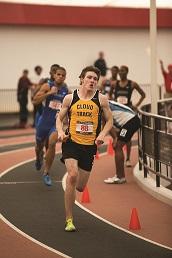
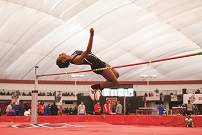
Tensions further escalated when those athletes formally requested sponsors to support their right to boycott the USATF. Meanwhile, USATF formed a group (this group will include athletes) to look into what exactly happened during this year’s indoor championships and to address “related systems and processes,” according to a statement released in late March by USATF president/chair Stephanie Hightower, who added: “These are topics that involve important elements of our structure that have ramifications far beyond race results at a single meet.”

One Northwest city is already way ahead of the pack.
Track Town USA
“You mention Eugene, Oregon, to people, and they’ll just start talking to you about running,” says Janis Ross, executive director of Eugene, Cascades & Coast Sports. “Track and field really is our marquee sport that we’re known for hosting.”
And perhaps no track and field venue has more marquee value than the University of Oregon’s historic Hayward Field. Built in 1919, the eight-lane facility enjoys its status as one of the most famous track and field-only facilities in the world, and it’s located in a city known both as the “Running Capital of the World” and “Track Town USA.” (Don’t forget that Nike was born in Eugene, too.)
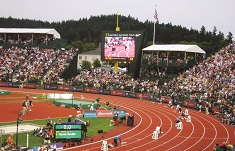 Hayward Field has hosted national championships, NCAA championships, Nike Prefontaine Classics and five U.S. Olympic Trials — including the ones in 2008 and 2012. The men’s and women’s NCAA Outdoor Track & Field Championships slated for June 11-14 and the U.S. debut of the International Association of Athletics Federations (IAAF) World Junior Championships from July 22-27 anchor this year’s event schedule. The USA Junior Outdoor Track & Field Championships will be held July 5-6. Other major events already are on the calendar for 2015 and 2016, and the NCAA Outdoor Track & Field Championships will call the facility home through at least 2021.
Hayward Field has hosted national championships, NCAA championships, Nike Prefontaine Classics and five U.S. Olympic Trials — including the ones in 2008 and 2012. The men’s and women’s NCAA Outdoor Track & Field Championships slated for June 11-14 and the U.S. debut of the International Association of Athletics Federations (IAAF) World Junior Championships from July 22-27 anchor this year’s event schedule. The USA Junior Outdoor Track & Field Championships will be held July 5-6. Other major events already are on the calendar for 2015 and 2016, and the NCAA Outdoor Track & Field Championships will call the facility home through at least 2021.
Over the years, Hayward Field has undergone updates, upgrades and expansions, and it now boasts more than 10,000 almost-always-full seats, a giant video screen, permanent lights, renovated indoor practice areas and state-of-the-art locker rooms, meeting spaces and athlete treatment rooms.
“Hayward Field is so iconic,” Ross says. “You can’t really talk to anyone about track and field and not have Hayward Field come up. There’s a mystique about it and athletes love to compete here. If someone does a great hammer throw here, the crowd goes nuts.”
But that venue isn’t the only way Track Town USA lives up to its name. The eight-lane, two-tone blue track at Lane Community College is a 10-minute drive from Hayward Field and serves as a practice facility for the U.S. Olympic Track & Field Trials, as well as the college’s men’s and women’s championship track teams. Although the venue lacks spectator seating, “picnic-style” seating is available on a berm surrounding the track, which itself is nestled in a valley with forest on multiple sides.
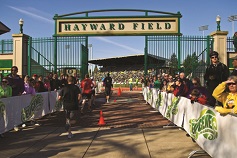 Another gem of a facility is McKenzie Track and Field, operated by a non-profit 501(c)(3) organization, McKenzie Community Track and Field in Blue River, Oregon, approximately a 45-minute drive from Eugene. Several meets are held at this venue, located in the Cascade Mountain foothills. In addition, the elite Oregon Track Club has trained at McKenzie. “You are in the forest and all of a sudden, here’s this track,” Ross says, likening it to a “mini Hayward Field.” “For an athlete coming in and wanting to train, it’s beautiful and secluded.”
Another gem of a facility is McKenzie Track and Field, operated by a non-profit 501(c)(3) organization, McKenzie Community Track and Field in Blue River, Oregon, approximately a 45-minute drive from Eugene. Several meets are held at this venue, located in the Cascade Mountain foothills. In addition, the elite Oregon Track Club has trained at McKenzie. “You are in the forest and all of a sudden, here’s this track,” Ross says, likening it to a “mini Hayward Field.” “For an athlete coming in and wanting to train, it’s beautiful and secluded.”
While Track Town USA may be tough to beat in terms of its location, amenities and overall vibe, plenty of other communities around the country are making a run at Eugene with their own track and field destination points. Each offers a significant draw, or advantage, to visiting athletes and their families, as well as to organizers of events. All contribute on different levels to sports event success.
Jacksonville, Florida
Jacksonville, Florida, has a track and field schedule that is only getting more crowded, and for a number of reasons, according to Ron Whittington, corporate communications manager for Visit Jacksonville.
Most significant, he notes, is the presence of Hodges Stadium at the University of North Florida. Featuring a nine-lane track, lighted field with four horizontal jump pits, eight pole vault locations and multiple areas for each throwing event, the venue also includes a full 400-meter, three-lane warm-up track. In 2008, Hodges Stadium became one of seven facilities in the United States to receive IAAF certification; it is certified as a Class II facility but is built to Class I standards.
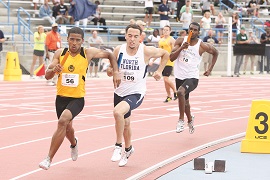
But perhaps what’s really driving track and field (and other sports, for that matter) to Jacksonville is this: “Not a lot of cities have 22 miles of beachfront,” Whittington says with pride. Jacksonville does. It also ranks as the largest city in the United States based on square mileage (almost 900 square miles), consolidated its county government into the city government, and boasts moderate temperatures late in the year that appeal to northerners and athletes from other cold climates.
The city will host the NCAA Division I Outdoor Track & Field East Regional Preliminary Round in May 2014 (as well as in 2015 and 2016), the USATF Masters Outdoor Track & Field Championship in 2015 and the USATF National Junior Olympic Track & Field Championships, also in 2015. That last event is expected to bring in thousands of athletes and generate a local economic impact of $14 million, according to Whittington.
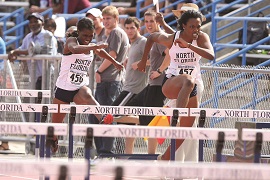 Additionally, in March, the Bob Hayes Invitational Track and Field Meet celebrated 50 years of attracting high school track and field participants, most of them from the southeastern United States. The event is held every March at Raines High School, and its namesake grew up in Jacksonville before going on to became an Olympic sprinter and wide receiver for the NFL’s Dallas Cowboys and San Francisco 49ers. This year’s meet drew more than 1,000 athletes, burgeoning its reputation as the largest one-day track meet in the United States.
Additionally, in March, the Bob Hayes Invitational Track and Field Meet celebrated 50 years of attracting high school track and field participants, most of them from the southeastern United States. The event is held every March at Raines High School, and its namesake grew up in Jacksonville before going on to became an Olympic sprinter and wide receiver for the NFL’s Dallas Cowboys and San Francisco 49ers. This year’s meet drew more than 1,000 athletes, burgeoning its reputation as the largest one-day track meet in the United States.
“To me, it’s not the Bob Hayes Invitational; it’s the Olympics of high school,” Westine Lodge, Hayes’ daughter, recently told The Florida Times-Union. “I’m so excited that this is still going on. It’s such a great event for the young men and women now, as well as future generations.”
North Carolina: Greensboro and Winston-Salem
A little further up the East Coast, track and field event organizers will find at least two welcoming locales in North Carolina. In fact, Winston-Salem is off and running with track and field facilities at Wake Forest University and Winston-Salem University — plus the opening two years ago of the privately owned JDL Fast Track, which is quickly becoming one of the premier indoor track and field facilities in the Southeast.
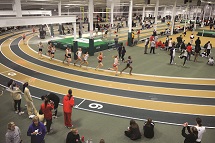
Available dates are getting hard to find: The facility — with an eight-lane track, two pole-vault runways, two long/triple-jump runways, one high jump area and one throw area — currently hosts events ranging from weekly high school and all-comer meets to national collegiate championships and elite races.
During a six-week period in February and March, JDL Fast Track hosted eight major track and field events, including the NCAA Division II Indoor Track & Field Championships; the North Carolina High School Athletic Association’s Indoor Track & Field Championships; and collegiate indoor championships for the Central Intercollegiate Athletic Association, Conference Carolinas and the Southern Conference.
About 30 miles directly east of Winston-Salem is Greensboro, which hosted the USATF National Junior Olympic Track & Field Championships last year — the same event Jacksonville will host next year. (Houston does the honors this summer.) The New Balance Outdoor Nationals, sponsored by the National Scholastic Athletics Foundation, are held annually in Greensboro and attract the top high school athletes from all over the United States.
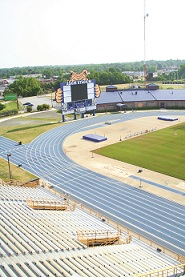 And like Jacksonville, Greensboro has a strong track record because of a local university. In this case, that’s the Irwin Belk Track at North Carolina A&T State University. The 23,000-seat complex features eight lanes; dual-direction runways for long jump, triple jump and pole vault; a multi-directional high jump; and brushed-concrete shot and discuss circles.
And like Jacksonville, Greensboro has a strong track record because of a local university. In this case, that’s the Irwin Belk Track at North Carolina A&T State University. The 23,000-seat complex features eight lanes; dual-direction runways for long jump, triple jump and pole vault; a multi-directional high jump; and brushed-concrete shot and discuss circles.
Brian Ambuehl, sports sales manager of the Greensboro Area Convention & Visitors Bureau, sees plenty of additional room for participation in the track and field sector. “Despite the rising costs of travel, clubs and individual athletes continue to attend the large regional and national events,” he says “Growth areas in track and field are with indoor and cross country competitions, where participation at the age-group level (8-18) is growing exponentially.”
Lubbock, Texas
On the map of the U.S., between Eugene, Oregon, and Jacksonville, Florida, you’ll find Lubbock, Texas — which is striving to become the sports capital of West Texas and Eastern New Mexico. With the 2009 opening of the Terry and Linda Fuller Track & Field Complex at Texas Tech University, Lubbock hosted the Big 12 Outdoor Track & Field Championships in 2009 and is doing so again in May.
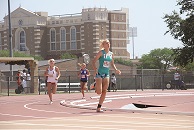
Thirty miles from Lubbock, South Plains College in Levelland, Texas, will host the National Junior College Athletic Association’s Division I Men’s and Women’s Outdoor Track & Field Championships in 2016 — something it previously did in 2012. The SPC Track, with eight lanes, a steeplechase pit, four jump pits, pole-vault and high-jump mats, bleacher seating for 1,500 and a field house, also is home to the college’s nationally acclaimed track and field program.
While many communities can host local and state track and field meets, additional expertise and quality venues are required to make higher-end events both memorable and successful, which is where the communities profiled here come into play. Harrison speaks enthusiastically about watching the track and field competitions that run through Lubbock. “When things get to the regional level and above, you’ll see some great competition,” he says. “State and national records are set here all the time.”

